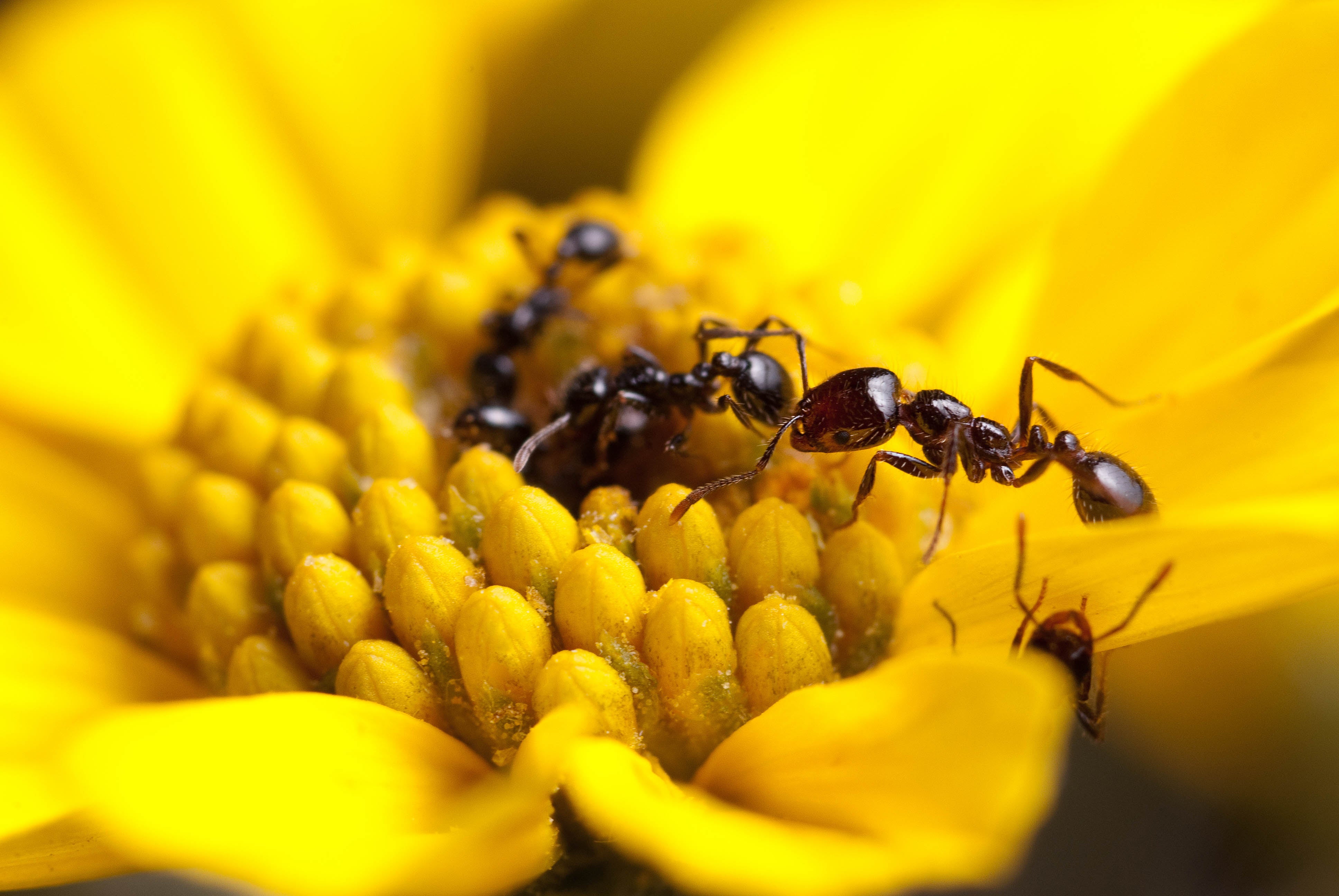ASU study sheds new light on antibiotics produced by ants

The thief ant (Solenopsis molesta). Photo by Magdalena Sorger
Ants, like humans, deal with disease. To deal with the bacteria that cause some of these diseases, some ants produce their own antibiotics. A new comparative study identified some ant species that use powerful antimicrobial agents, but also found that 40 percent of the ant species tested did not appear to produce antibiotics. The research has applications in the search for new antibiotics that could possibly be used in humans.
“These findings suggest that ants could be a future source of new antibiotics to help fight human diseases,” said Clint Penick, lead author and assistant research professor at Arizona State University's Biomimicry Center.
“One species we looked at, the thief ant (Solenopsis molesta), had the most powerful antibiotic effect of any species we tested," said Adrian Smith, co-author of the paper and assistant research professor at North Carolina State University and head of the NC Museum of Natural Sciences’ Evolutionary Biology and Behavior Research Lab. "And until now, no one had even shown that they made use of antimicrobials."
For this study, the researchers tested the antimicrobial properties associated with 20 ant species. They did this by using a solvent to remove all of the substances on the surface of each ant’s body. The resulting solution was then introduced to a bacterial slurry. The growth of the bacteria in the slurry was then compared to the growth of bacteria in a control group.
If the bacteria in a slurry that contained ant solution grew less than the control group, that meant an antimicrobial agent was at work. For example, the slurry containing thief-ant compounds showed no bacterial growth at all.
Foragers of the desert fire ant, Solenopsis xyloni, collect flower nectar. A recent study finds that ants in this genus produce some of the strongest antimicrobials measured in social insects. Photo by Clint Penick
The researchers found that 12 of the 20 ant species had some sort of antimicrobial agent on their exoskeletons — including some species, like the thief ant, that previously had not been shown to do so. Of those studied, it appears that eight of the ant species do not to make use of antibiotics at all. Or, at least, any antimicrobials on their exoskeletons were ineffective against the bacteria used in the study.
“Finding a species that carries a powerful antimicrobial agent is good news for those interested in finding new antibiotic agents that can help humans,” Smith said. “But the fact that so many ant species appear to have little or no chemical defense against microbial pathogens is also important.”
That’s because conventional wisdom has long been that most, if not all, ant species carry antimicrobial agents. But this research indicates otherwise.
“We thought every ant species would produce at least some type of antimicrobial,” said Penick, an alumnus of the ASU School of Life Sciences animal behavior PhD program. “Instead, it seems like many species have found alternative ways to prevent infection that do not rely on antimicrobial chemicals.”
“The fact that not all ants use antimicrobials highlights the importance of refining our search for species that actually do hold promise for biomedical research,” Smith added. “For example, the thief ant is closely related to the red imported fire ant (Solenopsis invicta), which is well known for the antimicrobial properties of its venom. But in our study, we found that the thief ant was even more effective against bacteria than the fire ant. There may be other species in the same genus that are worth studying for their antimicrobial potency.”
The researchers caution that the study has limitations. For example, the scientists used only one bacterial agent in the tests, and it's not clear how each species would fare against other bacteria. Next, researchers hope to test ant species against different bacteria, determine what is producing the antibiotic effects, and explore other strategies ants may use to defend themselves against bacterial pathogens.
The journal Royal Society Open Science published the study on Feb. 7.
Authors: Clint A. Penick, Arizona State University; Omar Halawani, Bria Pearson and Adrian A. Smith, North Carolina State University and the North Carolina Museum of Natural Sciences; Stephanie Mathews, Campbell University; Margarita López-Uribe, Pennsylvania State University; and Robert R. Dunn, North Carolina State University and University of Copenhagen.
The Triangle Center for Evolutionary Medicine and the National Science Foundation under grants 1523817, 0953390 and 1319293 provided funding for this research.
More Science and technology

4 ASU researchers named senior members of the National Academy of Inventors
The National Academy of Inventors recently named four Arizona State University researchers as senior members to the prestigious…

Transforming Arizona’s highways for a smoother drive
Imagine you’re driving down a smooth stretch of road. Your tires have firm traction. There are no potholes you need to swerve to…

The Sun Devil who revolutionized kitty litter
If you have a cat, there’s a good chance you’re benefiting from the work of an Arizona State University alumna. In honor of…


